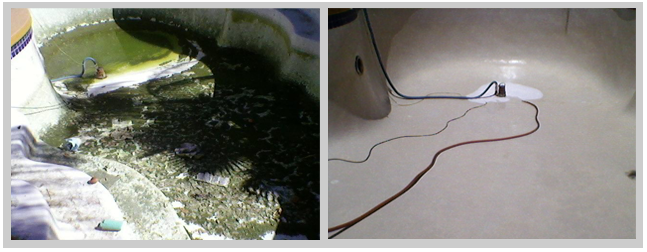An acid wash becomes necessary if the pool has turned into the “black lagoon”. This may occur if the pool has been stagnant for a period of time so that algae has taken over. If you notice scaly, man-phibian creatures splashing around out back, it’s probably time to drain & clean.
A general rule of thumb for determining the need for an acid wash is:
- If you can see the bottom of the pool (the floor) then you can bring it back with chemicals, labor and filtering.
- If the floor is not visible, the cost of the chemicals and labor will generally be greater than the acid wash charge, and take much, much longer. Also, extensive algae blooms will stain plastered pools, making an acid wash desirable.
An acid wash is a purposeful stripping of a tiny layer of plaster, exposing fresh plaster beneath. Therefore, it is ill-advised to make it an annual custom, which will accelerate the need for re-plastering. Most plaster coats (sometimes called whitecoat or marcite) are in excess of 1/2″, so a few careful acid washes shouldn’t hurt. Pools can also be bleach washed, pressure washed or treated with citric acid.

You may also decide on an acid wash not because of swamp conditions, but just to bring out a brighter, whiter finish. Mineral stains and/or deposits, chlorine stains, even dirt stains…an acid wash is always a dramatic aesthetic improvement.
If your pool has had years of algae blooms, and if your pool seems to grow algae overnight or just bloom very easily….changing the water and acid washing the surfaces algae sticks to can give you an algae free summer.
Acid is a dangerous substance. Pool company personnel are specially trained in its application and wear protective clothing and breathing apparatus during the acid wash. To protect our environment, the acid/water waste should be neutralized with soda ash prior to its being pumped to a safe location.
